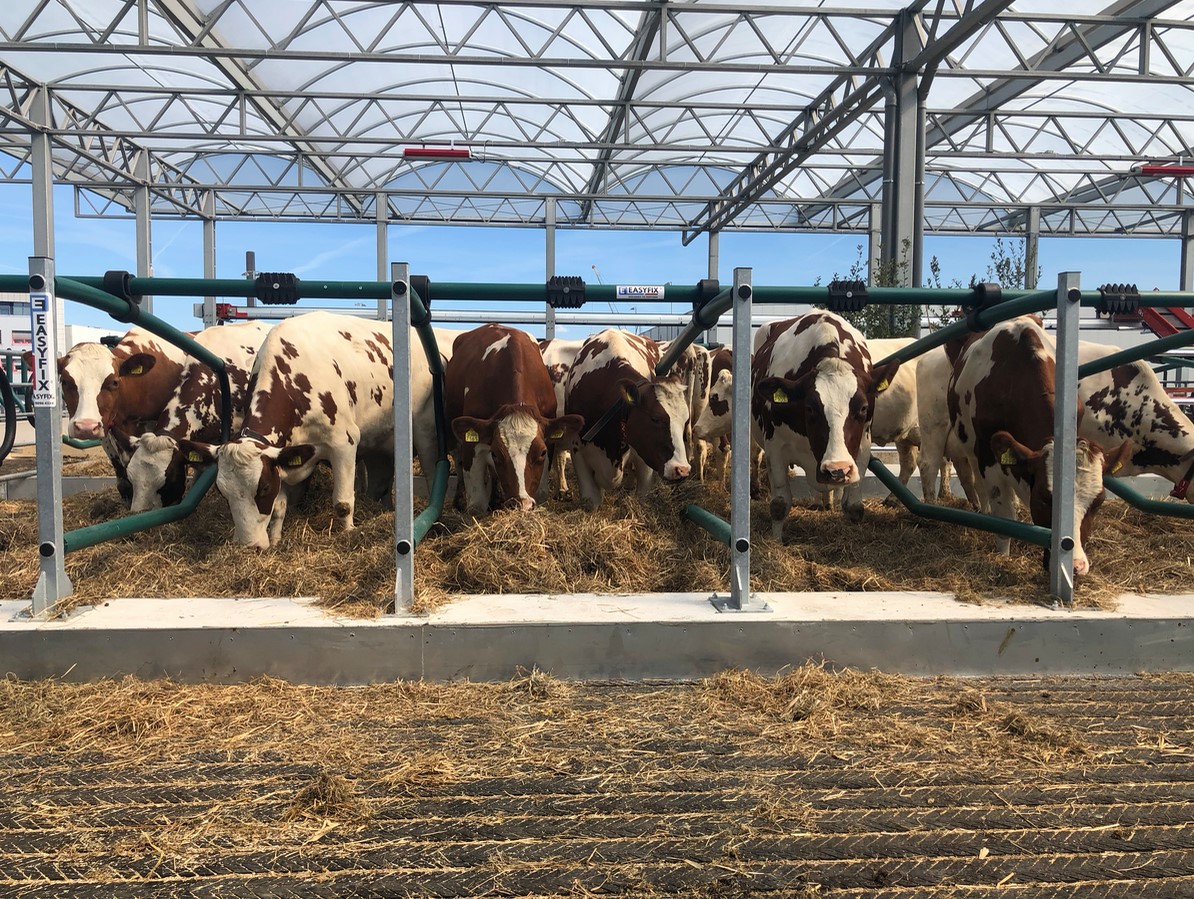This Dutch city has opened the world’s first floating farm
Europe’s busiest port is now home to a herd of cows that are helping to teach people about climate resilience, sustainable production and the importance of bringing food closer to the people.
R
otterdam has built itself a reputation as a champion of climate change adaptation – especially when it comes to battling rising sea levels. It is no surprise then, that the Dutch port city is home to the world’s first floating farm.
The Floating Farm is the brainchild of Peter and Minke van Wingerden, from Rotterdam-based property company Beladon. Thirty-two cows currently produce around 800 litres of milk per day inside the farm, on the harbour of Merwehaven.
The facility, designed by the architecture studio Goldsmith, aims to make food production less vulnerable to climate change while having minimal impact on the environment. The farm also prides itself on its animal welfare standards and wants to educate people about the need to adopt sustainable farming methods – a lot of issues tackled by one innovative building.
Feeding the urban population
With a growing population and more densely populated cities, producing enough food is a challenge that modern society will have to face up to as soon as possible – especially when you add climate change into the equation.
Many of our big cities are built next to rivers, by the coast or on deltas, so it makes sense to use them for agricultural purposes. And alongside this opportunity of creating more farmland, bringing farming back into the city allows us to bring food production closer to consumers, making our food supply chains less vulnerable to disruption from floods and other events.
This, in fact, was the inspiration for the floating farm project. Peter van Wingerden was working in New York when Hurricane Sandy struck the city in 2012. In no time at all, the city had run out of fresh food due to damages to the transportation network. Wouldn’t it make more sense to produce food closer to the end consumer, van Wingerden asked.

Source: Floating Farm
In addition to being climate resilient, the farm also uses sustainable farming methods which are supported by cutting-edge technology. For example, the cows share their barn with a milk robot which allows the cows to be milked when they choose to, an automatic belt feeder and a slurry robot that is constantly clearing the floor of manure.
The circular economy is also ingrained in the farm’s operations. The manure collected by slurry robot is sold as fertilizer or used to generate energy. The roofs contain water tanks that collect rainwater for cleaning purposes and floating solar panels that produce electricity. Even the cow’s urine is not wasted – it flows through a special membrane in the floor and is used as a fertilizer for plants.
Even the food eaten by the cows comes from sustainable sources; grass from local playing fields and golf courses, potato peelings and bran and grain from breweries. In fact, 80% of the cow’s diet comes from the city of Rotterdam.
“The part they love very, very much is the beer broth. So the waste of the beer process, we are adding this to the hay. So they are digging in the hay to find the best beer broth,” said Peter van Wingerden.
Education benefits
As well as encouraging consumers to reconnect with the food system, a major goal of the project is to promote floating infrastructure as a viable, sustainable building method. Merwehaven is fast-becoming a residential district, and this is why the building is made from see-through materials – to remind the population of the city where their milk comes from.
Animal Welfare
The wellbeing of the cows is also a priority. Each cow has its own stall in the floating farm, and is free to wander in and out of the farm into a field on dry land adjacent to the water-born structure. “We try to make them happier on the floating farm than they would be in a regular stable,” said Minke van Wingerden.
The Floating Farm project and it’s creators and staff do not want to stop there. They have plans to expand the business to include a floating chicken farm and a floating vertical farm, which would produce fresh fruit and vegetables for the city – and the cows.
The ideas presented in this article aim to inspire adaptation action – they are the views of the author and do not necessarily reflect those of the Global Center on Adaptation.